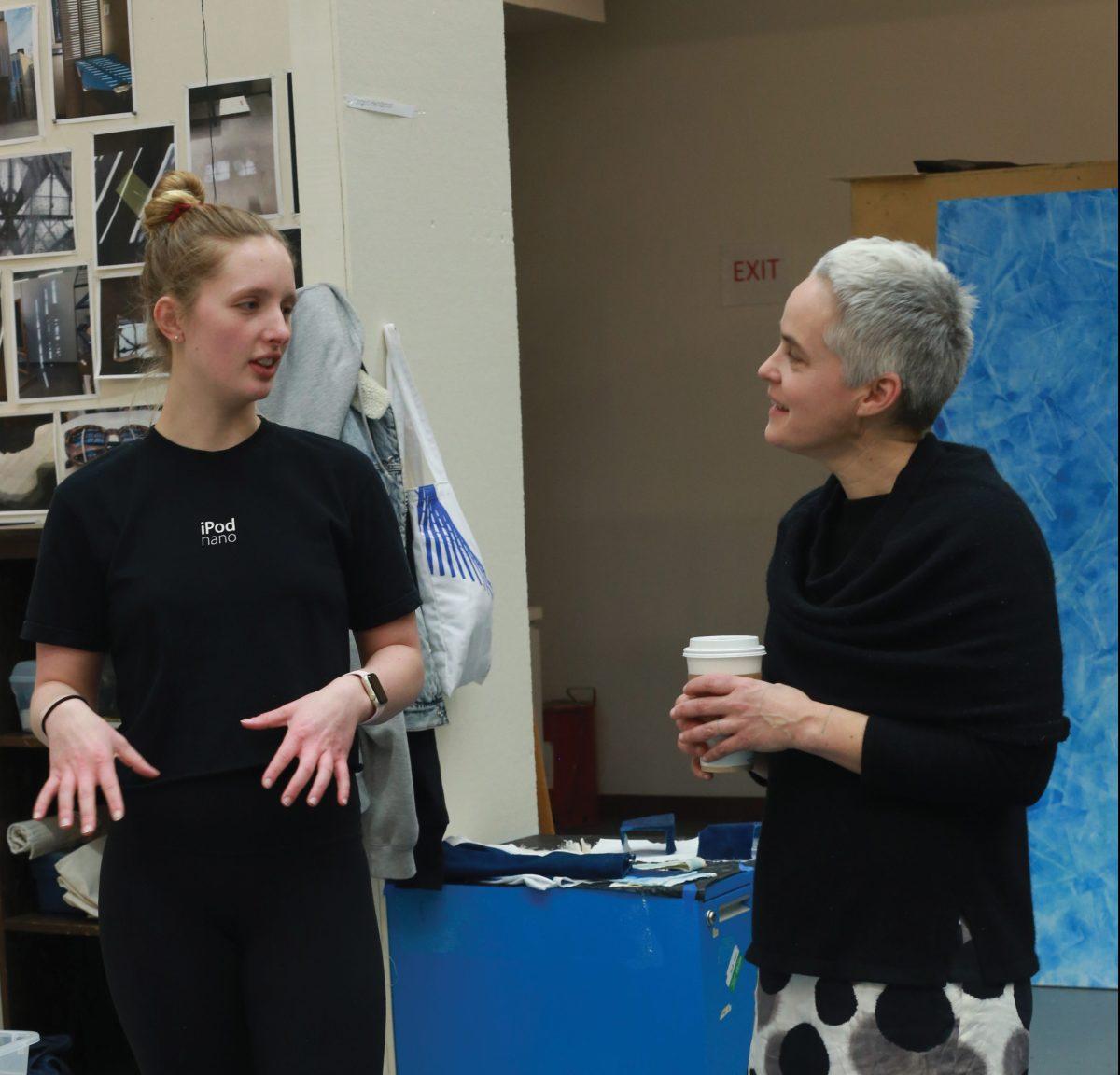Last Friday, Feb. 15, artist Anna Hepler visited campus as part of the semesterly Frank Williams Visiting Artist lecture series, now in its third year. Prior artists who have visited as part of the series include multimedia artist Annette Lemieux and Sarah Oppenheimer, whose large-scale works explore the intersection between architecture and sculpture.
Frank Williams, the series benefactor, has collected art for around 20 years. In addition to having historical family connections to Wellesley College, Williams’ collection is curated by a Wellesley alumna, Rachael Arauz ’91. Both Williams and Arauz thought it would be fun if some of the artists featured in his collection could come to Wellesley and discuss their work with a wide audience, leading to the creation of the lecture series.
In addition to the lecture and the Q&A, the featured artist does studio visits with senior thesis art students. As part of the program, a group of students is also invited to visit Williams’ collection to see the artist’s works in person with the artist present, to discuss their art. “It’s always fun for me to just sort of stand in the background and listen to the questions — and the answers,” said Williams, who attended the talk. “It’s usually an interesting conversation.”
Hepler, who attended Oberlin College, always knew she wanted to pursue the arts, even though she felt self-conscious about the practicalities of being an artist. She started in printmaking and then pursued book arts before expanding more to sculpture and a wide variety of media. “At that time I was probably more fixed on outcomes than any other time in my life,” she said. “I wanted to be a book artist. I felt clear that that was what I needed to do. I was a total workaholic. That was the only thing I did.” While she now values relaxing a little and taking life as it comes, these were skills that came later.
An eminently warm and upbeat presence, Hepler spoke frankly and openly about her work and artistic method when she lectured in Collins Cinema to a mixed audience of students, faculty and visitors. “I have no explanation for my work,” she said in the introductory stages of her talk, elaborating on how she sees the making of art as a way of formulating thought that represents a broader experience than spoken language. After a short introduction, she shared her four “guiding principles,” drawing from both personal anecdotes and stories of famous artists past.
“Do something you don’t know how to do,” was the first, and Hepler went on to elaborate that taking on new challenges in this way helps “maintain a level of vulnerability” and encourages improvisation conducive to creativity.
The second, borrowed from filmmaker Charlie Kaufman, was “say who you are, don’t sell who you are.” Hepler added that the “weird” things one might try to hide in order to make a good impression are really probably “your best stuff,” and should be treated accordingly.
Her third guiding principle came from artist Agnes Martin’s concept of a state of “obedient authority” that one’s relationship with anything, whether it be an artist’s relationship with another person or with her materials, can be understood as a balance between obedience and authority, both of which exist in us in equal measure at all times.
Last but not least, her fourth principle was “you can always give more than you think you can,” an idea that dovetails remarkably well with Wellesley’s own “Non Ministrari sed Ministrare” motto.
These four principles provided a helpful through-line for the rest of Hepler’s talk as she presented a wide range of examples from her own work, including everything from woodblock prints to giant installations. Her pieces frequently feature lattices, frameworks and creating the “illusion of lines standing on their own.” Another recurring theme was her interest in the interplay between 2D and 3D — the artist, for example, will frequently use her sculptures to make prints.
“I feel like I can learn something by flattening my work,” she explained. While she does not make modular pieces all too often, she said she finds puzzle-like works such as “Jigsaw,” which consists of many pieces slotted together in different ways whenever it is moved to a new location, help keep her process playful.
In discussing her method, Hepler revealed that she prefers to work fast, as she finds lingering on ideas tends to breed self-doubt. Making art with a certain amount of speed enables her to “jump over my doubts and self-deprecating thoughts,” going on to elaborate that it’s “a chance to outrun your mind.” The goal, she said, is to make work that is adequate instead of obsessing over excellence.
Hepler’s talk was followed by a lunch reception and then finally her one-on-one visits with studio art students. As Ingrid Henderson ’19 is the only thesising Studio Art major in the senior class, the opportunity was opened up to other students in the department.



